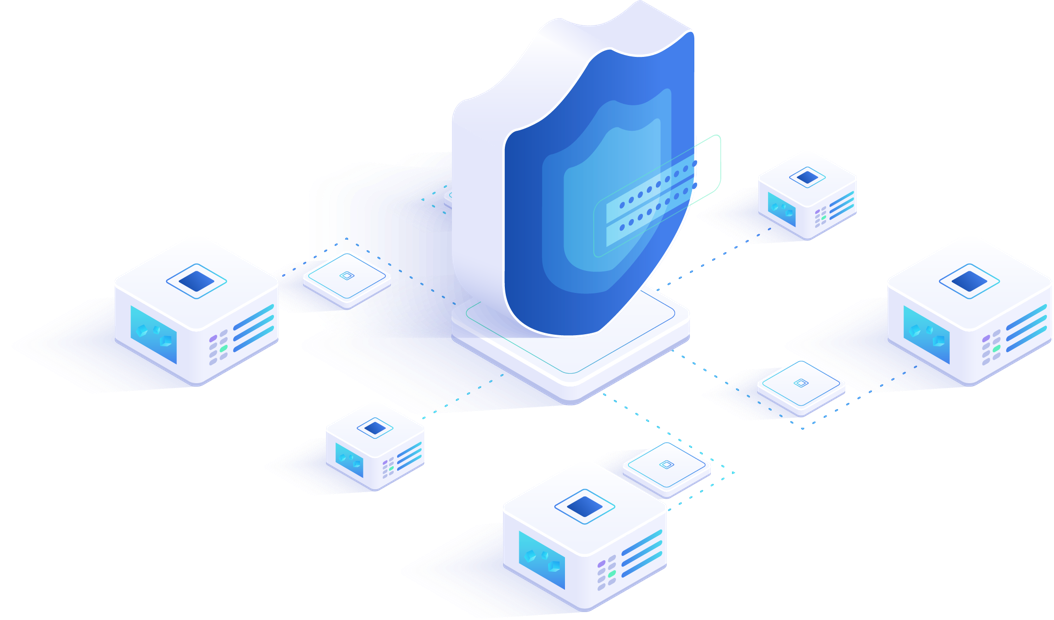What is patch management compliance?
Patch management consists of scanning computers, mobile devices or other machines on a network for missing software updates, known as “patches” and fixing the problem by deploying those patches as soon as they become available. Patches are a type of code that is inserted (or patched) into the code of an existing software program.
Because not installing patches can create serious security breaches, many government agencies and industry associations have mandated patch management compliance.
Government institutions, healthcare services and financial sectors tend to have the most stringent regulatory compliance requirements. However, organizations in a variety of fields must comply with governmental regulations, service level agreements (SLAs), industry association mandates and corporate policies.
Some of the most prominent regulatory agencies and laws requiring some type of patch management security regulatory compliances are:
-
Payment Card Industry Data Security Standard (PCI DSS)
-
Health Insurance Portability and Accountability Act (HIPAA)
-
National Institute of Standards and Technology (NIST)
-
European Union General Data Protection Regulation (GDPR)
-
Federal Financial Institutions Examination Council (FFIEC)
-
Gramm-Leach-Bliley (GLBA)
-
Sarbanes-Oxley (SOX)
-
Family Educational Rights and Privacy Act (FERPA)
Many of these agencies require implementation of a regular, fully documented patch management process – outlining step-by-step procedures. Organizations must be able document proof of continuous regulatory compliance and pass periodic audits. Not implementing patch management compliance measures can result in legal penalties for an organization. For instance, the European Union’s GDPR has the clout to fine non-compliant organizations up to €20 million (about US$22 million) or four percent of their annual global turnover.
More and more states, nations, and international bodies are passing laws that impose privacy protection and other requirements on organizations in their jurisdictions. Within the U.S., those laws can even differ from state to state, making applicability and compliance confusing.
This complexity is even more challenging for small and medium sized businesses (SMB) with limited IT departments. These new requirements bring more of these organizations into the regulatory arena, where they must navigate a maze of mandates laid out in confusing and sometimes vague legal jargon. SMBs may have difficulty understanding what the patch management requirements are, whether they are applicable – and if so, how to properly comply.
Why is patch management compliance important?
Proper patch management can greatly improve an organization’s security defenses by addressing the vulnerabilities in its software and operating systems. Here are a few reasons why patch management compliance is critical:
-
Security
Cyberthreats have become commonplace, so regulatory bodies are mandating that businesses apply the latest patches as a defense against these threats. Network security breaches are most commonly caused by missing patches in operating systems and other applications. Non-compliance places valuable information assets at risk, such as intellectual property and highly sensitive customer data (health records, credit card numbers, etc.). -
Regulatory fines
Fines for failure to comply with U.S. and international regulations such as the Health Insurance Portability and Accountability Act (HIPAA) and the General Data Protection Regulation (GDPR) can cost companies thousands or even millions of dollars. A $100,000 fine may be a significant portion of a small firm’s profit margin. -
Reputation loss and legal liability
Businesses can lose the trust of their clients if customers discover that a company hasn’t complied with regulations. According to a Ponemon Institute study, The True Cost of Compliance with Data Protection Regulations, “The consequence of not managing compliance risks include a loss of trust that will jeopardize customer loyalty, and the inability to deliver services and products causing revenues to decline.” Additionally, customers can even take legal action against a firm for a serious privacy breach if hackers are able to access data that could lead to monetary or identity theft. -
Productivity
Computer crashes due to defective software can lead to lower productivity levels. Installing a patch, on the other hand, reduces the possibility of crashes and downtime, thereby allowing workers to do their tasks without interruptions. Patches are not always about fixing bugs. They can also include new features and functionality that can tap into the latest innovations of the software. Software suppliers are constantly working on new features and sending new functionality in the form of patches. Having IT download and install these patches can help employees work better and smarter. -
BYOD
The emergence of “bring your own device,” or BYOD, has opened up a whole new avenue of opportunities for cyberattackers. Employees increasingly use their personal and office devices interchangeably to do their work – requiring personal devices to be protected as well. Good patch management compliance should install patches across all devices, regardless of their physical location. Compliance acts as a defense against many of the challenges that come with using personal devices.
Meeting patch management compliance goals using software tools
Over the past decade, a variety of patch management software solutions have come on the market that can help organizations more easily meet regulatory compliance requirements. These include auditing and security scanning solutions, threat management, access control, network monitoring and patch management software to help meet specific compliance needs.
Cloud services provide built-in tools such as encryption options, identity and access management (IAM) systems, virtual network isolation and other security tools that help to protect personal data as required by privacy regulations. When combined with on-premises patch management tools, achieving regulatory compliance goals become more obtainable.
How do you choose the right patch management solution, given the large number of patch management tools available today? Here are some capabilities that should be present in patch management software to assist with regulatory compliance:
-
Contains specific reports for major compliance acts, as well as reports focused on account usage and management, policy changes and others
-
Maintains complete vulnerability assessment coverage and consolidates findings into meaningful reports – regardless of platform – as is required by regulatory bodies such as PCI and HIPAA
-
Provides log data collection, normalization and multi-layered consolidation to meet log data availability retention and reviewing patch management requirements of common regulatory bodies and acts
-
Generates reports on the status of each update and relevant statistics about patch installs and updates for auditing purposes
-
Works across different platforms and operating systems – including Microsoft®, MAC OS X® and Linux® operating systems, Amazon Web Services (AWS), other cloud platforms, as well as third-party applications
-
Scans the entire network to identify missing patches across different software
-
Downloads patches directly from vendors’ sites
-
Includes efficient patch testing and deployment procedures
-
Installs easily across all devices such as desktops, laptops and servers
Blogs
Regulatory Compliance Requirements for Business Situations
Discover why small and medium-sized businesses must be just as concerned with compliance procedures as large enterprises.
The best patch management strategy for 2019
Learn six steps that can help you deploy an effective patch management strategy.
Exploring automated patch management solutions
Find out how automated patch management solutions go hand in hand with your vulnerability management program.
GFI LanGuard for patch management
Discover why thousands of IT admins worldwide use GFI LanGuard to scan networks for vulnerabilities, automate patching and achieve regulatory compliance.
GFI LanGuard free trial
Download a 30-day trial of GFI LanGuard that includes Patch Management for Windows®, Mac OS® and Linux®.
Related Posts

Jul 16, 2025
GFI Software Elevates Kerio Channel Strategy, Appointing Zebra Systems as New Authorized Distributor for North America
GFI Software, a global leader in AI-powered security and communications solutions for small and medium-sized businesses (SMBs), today announced a bold realignment to level up its Kerio channel strategy for North America. Effective October 12 2025, Zebra Systems LLC (Zebra Systems) will become the new authorized distributor for GFI’s acclaimed Kerio product family, including GFI KerioControl, GFI KerioConnect and the integrated GFI AppManager solutions, across the United States and Canada.

Jun 5, 2025
Celebrating Partnership Excellence: Announcing the 2025 GFI Partner Awards Winners
GFI Software proudly announces the winners of its prestigious 2025 Partner Awards, recognizing the outstanding achievements of our global channel partners. These awards celebrate the partners who have consistently set the standard for business growth, built strong customer relationships, and provided invaluable feedback that drives our product and service improvements.

Aug 14, 2019
Patch Management Audit Checklist by GFI Software
Perform regular and systematic patch management audits to evaluate the success of an organization’s patch management program

Aug 14, 2019
Linux patch management software and strategies
Discover the unique challenges to patch management in Linux

Aug 14, 2019
What is patch management?
Find out what patch management actually is and why it's important for your data security.

Aug 14, 2019
Windows Patch Management Best Practices
Improve security by systematically addressing vulnerabilities in your Microsoft software and operating systems
